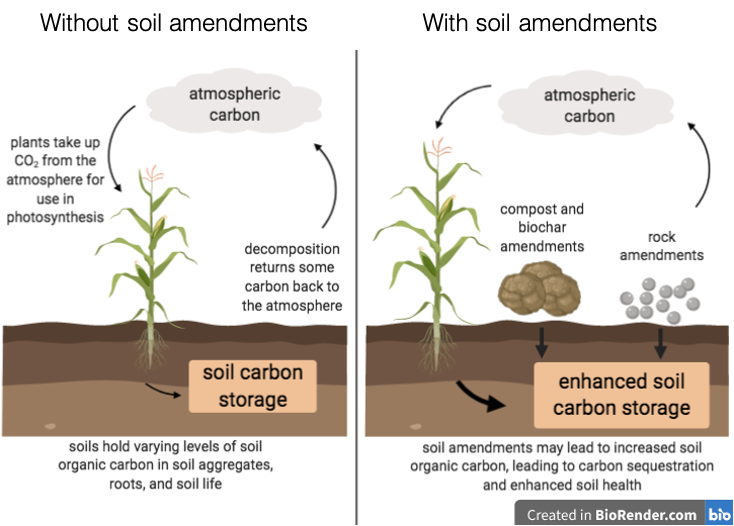There has been a lot of talk about soil carbon farming in the last few years. The USDA describes soil carbon farming as “the use of specific on-farm practices designed to take carbon out of the air and store it in soils and plant material.” Carbon farming practices include the application of soil amendments like compost, biochar, cover crops and the use of conservation tillage. The idea behind soil carbon farming is to build soil organic matter, leading to greater carbon sequestration in soil. This diagram from USDA explains the concept well:

SOURCE: USDA
There are many companies and non-profits vying for farmers to undertake soil carbon farming—Bayer Foreground, Indigo Ag, ESMC, and a slew of new projects funded by the USDA’s Partnership for Climate Smart Commodities grants. We are going to see many more opportunities for soil carbon farming in the next few years.
If you are a farmer considering whether to sign up for one of these soil carbon farming contracts, here are five things to consider:
First, how much does the soil carbon contract offer to pay per acre? There are many different compensation structures for these programs. The simplest contracts pay a farmer a per acre fee to implement a specific practice. These are straightforward. Other contracts offer to pay the farmer for the results of carbon farming. These pay farmers for carbon credits generated on their land during the contract term. Figuring out how much payment will result from signing up can be a real challenge, since the amount of carbon that will be stored and the price of a carbon credit in the future are both unknown. Still, ask the company to give you an estimate of the revenue expected.
Second, does the expected revenue offset the “paperwork” burden required during the term? Some of these programs have fairly significant reporting obligations. If these are accomplished electronically for a farmer who has good digital records, the burden on the farmer is probably insignificant. But for other platforms that require self-reporting, sometimes even on paper forms, the burden could be substantial. Ask on the front end.
Third, will the required changes to your farm have a significant short-term impact on yield? Presumably, any improvement in soil health will have a long-term benefit to the farmland, which is great. But if there is an anticipated short-term negative impact, make sure it is offset by the payment provided or long-term improvement to soil health.
Fourth, can the farmer exit the program before the end of the term? Building soil carbon is a long-term prospect. Farmers should understand whether they can exit before the end of the term and what is the penalty for doing so. Long-term is not bad, but understand how long and deep the commitment is at the beginning of the term.
Fifth, does the contract have an indemnity clause? These are what keep lawyers awake at night. Is the farmer potentially liable to the soil carbon contract company if things do not go as intended? Considering the payouts for farmers under these programs are relatively small (compared to the cost of farming), any indemnity by the farmer should be small as well, or non-existent.
Todd Janzen is speaking about data collection and soil carbon sequestration at the 2024 National No-Tillage Conference. Click here for details and to register.






Post a comment
Report Abusive Comment